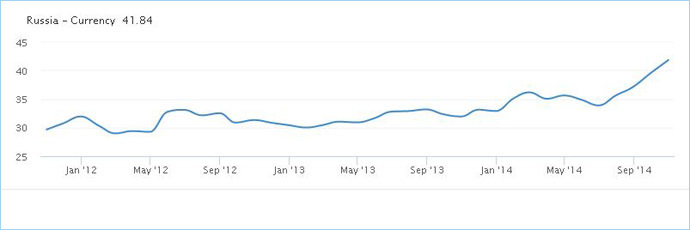
AFP Photo/ISIL
Hundreds of US-led airstrikes and daily multi-million
dollar military operations have failed to stem the tide of foreign
fighters entering Iraq and Syria, who continue to pour in by their
thousands, according to multiple reports.
“The flow of fighters making their way to Syria remains
constant, so the overall number continues to rise,” a US
intelligence official told the Washington Post.
Concrete changes might not be apparent for weeks the official
said, noting the natural lag between the actual situation on the
ground versus the scenario painted by analyzed intelligence.
With US intelligence estimating that 1,000 foreign fighters
continue to enter Iraq and Syria every month, the Post estimates
that their numbers now exceed 16,000. That figure eclipses the
number of foreign fighters who took up arms in any analogous
conflict over the past decades, including the Soviet military
campaign in Afghanistan.
The figures fall within the same ballpark of a recent UN Security
Council estimate. According to documents
seen by The Guardian, 15,000 people have
travelled to Syria and Iraq to fight alongside the so-called
Islamic State (IS, formerly ISIS/ISIL) and similar extremist
groups. They come from more than 80 countries, the report states,
“including a tail of countries that have not previously faced
challenges relating to Al-Qaeda.”
The
figures mirror US intelligence estimates in
September, which also reckoned some 15,000 foreign fighters had
entered the region via 80 different countries.
Reflecting the Post’s assessment, the UN committee notes that
overall numbers since 2010 “are now many times the size of the
cumulative numbers of foreign terrorist fighters between 1990 and
2010 – and are growing.”
The committee, tasked with monitoring Al-Qaeda, did not mention
the 80 states by name, though the overall geographical diversity
of the fighters was unprecedented.
Meanwhile, the reports sharply underscore how expensive US-led
military efforts have so far proved ineffective at stemming the
tide of the IS advance in Syria and Iraq.

AFP Photo/ISIL
The United States and its allies have carried out more than 600
strikes so far in Syria and Iraq, with the strategic aim of
allowing moderate opposition forces some breathing space to
regroup. Since August 8, the US has flown 6,600 manned and
unmanned sorties in Iraq and Syria at an estimated cost of $8.3
million a day, Defense News reports. Last week, it was reported
that 32 civilians have died so far in the strikes.
Earlier this month, the Associated Press, citing Pentagon data,
estimated that the United States alone had spent approximately
$1.1 billion on its military operations in Iraq and Syria since
mid-June.
Pentagon spokesman Rear Admiral John Kirby said this week that
the bombing campaign was disrupting IS, though he admitted that
any major offensive
“may still be a ways off,” the Post
cites him as saying.
US officials have said that the uninterrupted flow of fighters is
not a proper metric to measure the effectiveness of the
airstrikes, which have killed an estimated 460 IS fighters since
last month, on top of 60 more fighters from the Al-Qaeda
affiliate Jabhat al-Nusra.
Officials have attributed the number and pace of foreign fighters
arriving in the region to several factors, including
sophisticated IS recruiting techniques, and the relative ease
with which would-be jihadists can travel from the greater Middle
East and Europe to Syria and Iraq.
The UN report similarly recognized
"the terror and
recruitment value of multichannel, multi-language social and
other media messaging," being conducted by the Islamic
State.
A recent CNN/ORC International survey found that 54 percent of
respondents believe the strikes will degrade and destroy the
military capability of IS. That figure is down from 61 percent in
September.
Meanwhile, the number of respondents who support sending US
ground troops to engage the jihadists was 45 percent - a seven
percent jump over the previous month. A majority, however, still
oppose putting boots on the ground.




